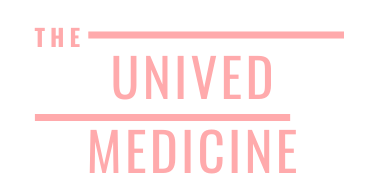Early Signs Of Myopathy: How To Recognize And Address Muscle Weakness?
Myopathy, a term that refers to muscle disease, can often lead to significant muscle weakness, affecting the way individuals perform daily tasks. Early identification of myopathy is crucial for effective management and treatment. In this article, we will discuss how to recognize the early signs of myopathy and how it can be addressed.
What Is Myopathy?
Myopathy weakens or damages muscles. Genetics, infections, autoimmune disorders, and drugs can cause the illness. While there are different forms of myopathy, they all share a common symptom: muscle weakness. Arms, legs, and sometimes respiratory muscles are most affected.
Recognizing Early Signs Of Myopathy
The signs of myopathy can vary from person to person, depending on the underlying cause. However, there are a few common symptoms that individuals should watch out for.
1. Muscle Weakness: One of the primary indicators of myopathy is muscle weakness, which often starts subtly. Walking up stairs, carrying groceries, or standing up from a seated posture may gradually lose strength. This can progress over time, and the weakness may become more pronounced.
2. Fatigue: Individuals with myopathy often experience unusual fatigue, even after minimal physical exertion. This is because the muscles are unable to function properly, leading to a quick depletion of energy. You may feel tired more quickly than usual, even after tasks that previously felt easy. In some cases, myopathy may also cause tingling sensations in the muscles or extremities, which can further indicate nerve involvement or muscle dysfunction.
3. Difficulty With Motor Skills: As the muscles weaken, fine motor skills may be affected. Simple tasks like buttoning a shirt, writing, or even using utensils can become challenging. This can lead to frustration and a noticeable decline in quality of life.
4. Muscle Cramps Or Pain: While muscle pain is not always present in myopathy, some individuals may experience cramping or aching muscles. These sensations may worsen after physical activity and can be a sign that the muscles are under stress.
5. Muscle Stiffness: In some cases, myopathy can cause the muscles to feel stiff or rigid. This stiffness can be more noticeable in the morning or after periods of inactivity. It may affect the range of motion, making it difficult to move certain joints freely.
6. Difficulty Breathing: In more severe cases, myopathy can affect the muscles involved in respiration. This might cause shortness of breath, especially when lying down or exercising. Breathing problems necessitate rapid medical treatment.
Addressing Muscle Weakness And Myopathy
If you recognize any of the early signs of myopathy, it is important to seek medical attention as soon as possible. Diagnosing myopathy early can help prevent further muscle damage and improve the overall prognosis. Here are some steps to take when addressing muscle weakness associated with myopathy:
1. Consult A Neurologist: A neurologist is the primary specialist involved in diagnosing and treating myopathy. To diagnose the origin of the weakness, they will perform a physical examination, muscle strength tests, and maybe blood tests, electromyography (EMG), or a muscle biopsy. If you’re noticing signs of persistent muscle weakness or fatigue, visit https://www.southvalleyneurology.com/services/myopathy to learn more about professional evaluation and treatment options for myopathy.
2. Genetic Testing: For individuals with a family history of myopathy or those suspected of having a genetic form of the condition, genetic testing may be recommended. This can help identify the specific type of myopathy and provide insight into the best treatment approach.
3. Treatment Options: Treatment for myopathy depends on the underlying cause of the condition. Corticosteroids or immunosuppressive medicines may be prescribed to decrease inflammation or suppress immunological activity. Myopathy management includes physical therapy to strengthen muscles and enhance mobility. In cases where myopathy is caused by an underlying disease, treating that condition may improve muscle strength and overall function.
4. Exercise And Rehabilitation: While exercise might seem counterintuitive when dealing with muscle weakness, physical therapy, and tailored exercises can be highly beneficial for individuals with myopathy. Physical therapy improves muscle strength, prevents atrophy, and increases flexibility. Swimming and walking are low-impact activities that reduce muscle tension.
5. Lifestyle Adjustments: Managing myopathy often involves making lifestyle changes to ensure optimal health. This might include dietary adjustments to support muscle function, managing stress, and avoiding activities that may strain weak muscles. Walkers and braces may be advised to promote mobility and prevent falls.
Conclusion
Myopathy can severely impair daily life, although early discovery and treatment can greatly improve management. Recognizing the early signs of muscle weakness—such as fatigue, difficulty with motor skills, and muscle cramps—can help prompt a timely diagnosis. Medication, physical therapy, and lifestyle changes can improve the quality of life after diagnosis. If you or a loved one has muscle weakness, see a doctor to identify the cause and treatment.



